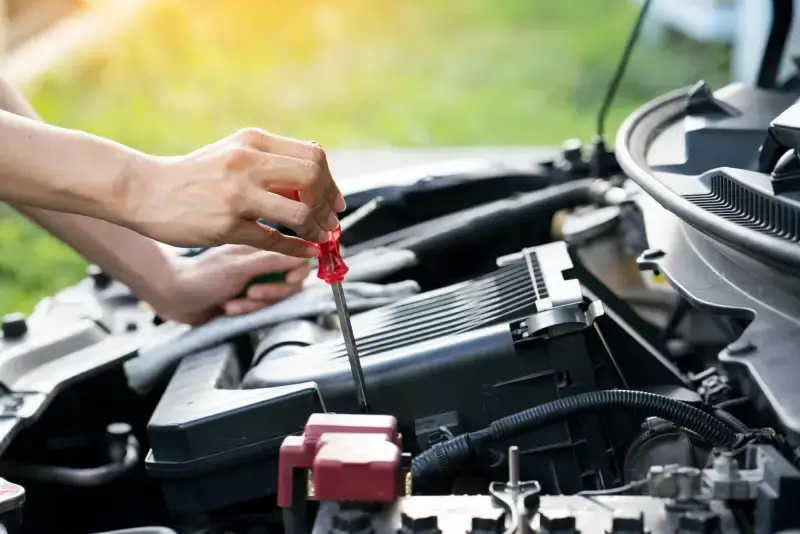The Maintenance History Report: Uncovering a Used Car’s Health Records

When considering the purchase of a used car, one of the most critical pieces of information you can obtain is the maintenance history report.
This document is akin to a vehicle’s health record, revealing crucial insights into how well the car has been cared for over its lifespan.
This article will explore the significance of a maintenance history report for used vehicles and how to use it effectively when buying.
What is a Maintenance History Report?
A maintenance history report, sometimes called a service history report or maintenance record is a comprehensive record of all maintenance and repair activities performed on a vehicle throughout its life. This report includes details such as:
- Service Dates: When each maintenance or repair service was performed.
- Service Descriptions: The type of service or repair completed, including oil changes, brake replacements, engine repairs, and more.
- Service Providers: Information about the facilities or mechanics that conducted the services, which can help verify the quality of the work performed.
- Mileage at Service: The vehicle’s mileage at the time of each service can indicate how frequently maintenance was conducted.
- Parts and Components Replaced: Details about specific features or components that were replaced, such as timing belts, tires, and brake pads.
- Recalls and Warranty Repairs: Any repairs made under recall or warranty coverage.
You may like to check out Car Maintenance Tips For A Summer Road Trip.
The Importance of a Maintenance History Report
Obtaining and reviewing a maintenance history report for a used car can provide several significant advantages:
- Predictive Maintenance: By examining past maintenance records, you can anticipate future maintenance needs. For example, if the timing belt was replaced recently, you won’t need to budget for that expense shortly.
- Verification of Care: A well-documented maintenance history confirms that the previous owner(s) cared for the vehicle properly. Regular maintenance strongly indicates a vehicle’s overall condition and longevity.
- Reduced Risk: Having insight into a vehicle’s past repairs and maintenance can help you avoid cars with recurring problems or extensive repairs.
- Resale Value: A complete and positive maintenance history can enhance the car’s resale value when it’s time to sell or trade it in.
- Warranty Verification: If the vehicle is still under warranty, the maintenance history can help verify that all required services were performed as per the manufacturer’s recommendations.
How to Obtain a Maintenance History Report
- Ask the Seller: When interested in a specific used car, ask the seller or dealership for the maintenance history. Many sellers readily provide this information, primarily if they’ve maintained the car well.
- Check the Vehicle’s Documentation: Inspect the vehicle’s owner’s manual and glove box for any maintenance records that the owner may have kept. Some conscientious car owners maintain their records meticulously.
- Contact the Service Providers: If the seller cannot provide the maintenance history, you can contact the service providers listed on the vehicle’s Carfax or AutoCheck report. They may have records of the services performed on the car.
- Online Resources: Use online resources to obtain a comprehensive vehicle history report. Services like Carfax and AutoCheck compile information from various sources, including service records, and provide a detailed description for a fee.
Read more on Navigating International eSIM Regulations: A Legal Guide for Travelers.
Interpreting a Maintenance History Report
Once you have the maintenance history report in hand, here’s how to interpret the information effectively:
- Regular Maintenance: Look for evidence of routine maintenance, such as oil changes, tire rotations, and fluid flushes. Consistent care is a positive sign.
- Major Repairs: Pay attention to significant repairs or component replacements, such as engine or transmission work. Determine whether these repairs were conducted at authorized service centers or reputable mechanics.
- Timing of Services: Check the service dates and mileage at each interval. The car should have received regular maintenance at the recommended mileage intervals.
- Recalls and Warranty Work: Ensure any recall-related repairs or warranty work is completed. This demonstrates that the owner addressed any manufacturer-identified issues.
- Lack of Records: Be cautious if the maintenance history needs to be completed or if significant gaps are missing. It may indicate that the car did not receive proper maintenance or the records required to be adequately kept.
- DIY vs. Professional Maintenance: Note whether the owner performed the maintenance as DIY or by professional mechanics. While DIY maintenance can be acceptable, professional servicing by certified technicians can provide added assurance.
Red Flags to Watch For
While reviewing a maintenance history report, keep an eye out for these potential red flags:
- Inconsistent Records: If the maintenance history is sporadic or contains long gaps between services, it could indicate neglect or issues that should have been addressed promptly.
- Frequent Repairs: A history of recurring repairs for the same issue could suggest an underlying problem that needs to be adequately resolved.
- Lack of Essential Maintenance: Missing records for critical maintenance tasks like oil changes, brake inspections, and timing belt replacements may indicate a lack of proper care.
- Incomplete Records: If the report is preliminary or needs more crucial details, assessing the vehicle’s overall health and maintenance history may be challenging.
- Accident History: While not part of the maintenance history, check for accident reports and repairs in the vehicle’s overall record. Accident damage can impact a car’s safety and reliability.
In Conclusion
A maintenance history report is a valuable tool when evaluating the condition and reliability of a used car. By obtaining and thoroughly reviewing this document, you can decide whether the vehicle has been well-maintained and is a safe and reliable choice for your needs.
It’s an essential step in the used car buying process that can provide peace of mind and help you avoid potential pitfalls.






